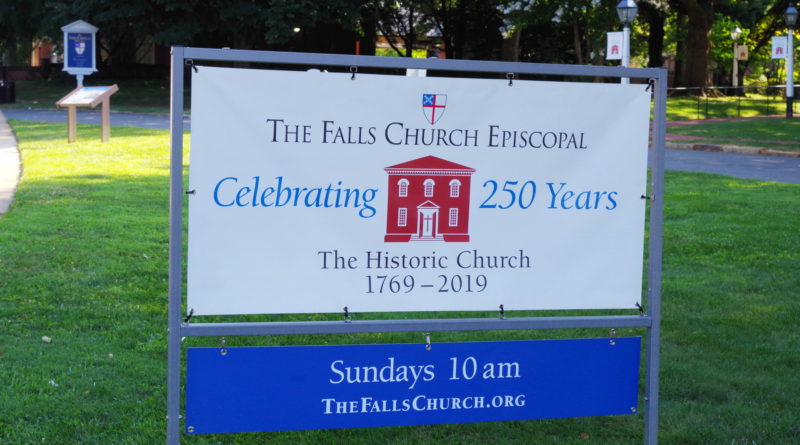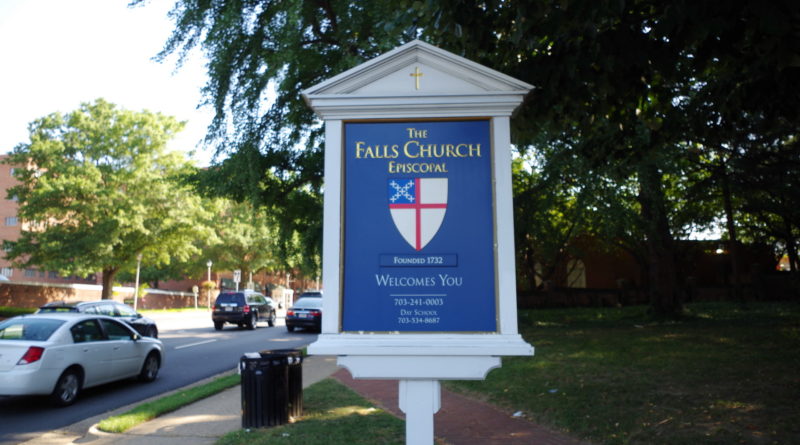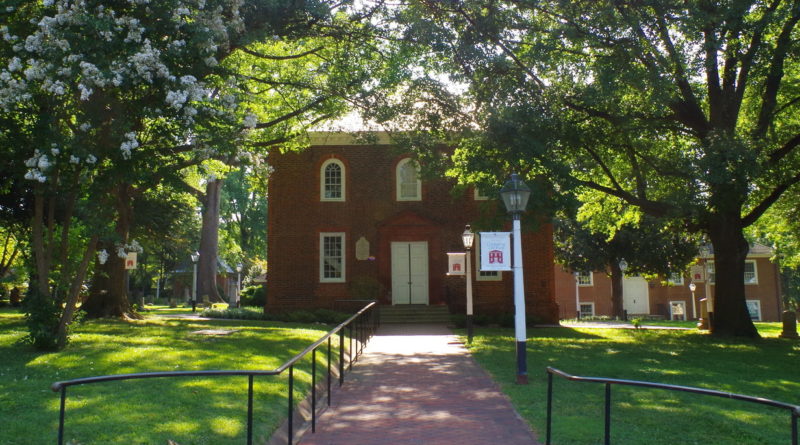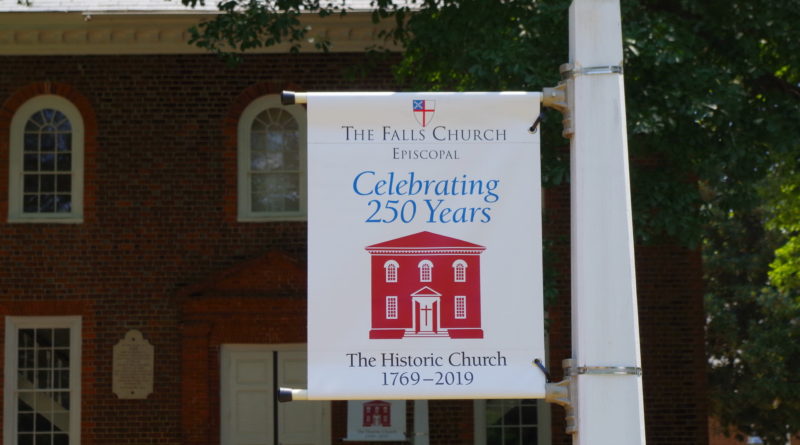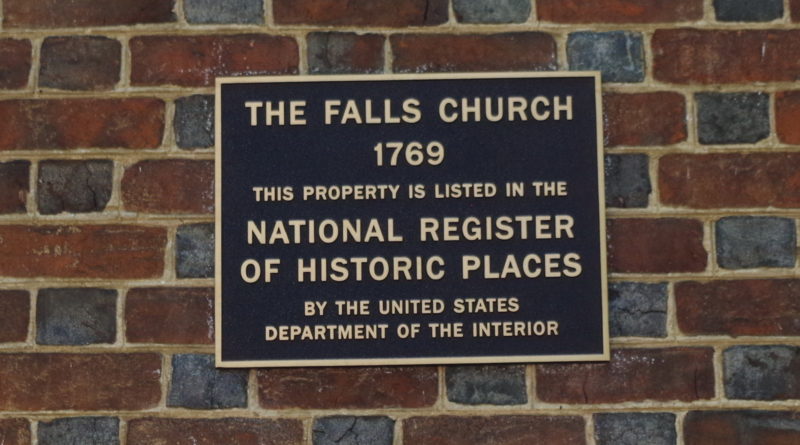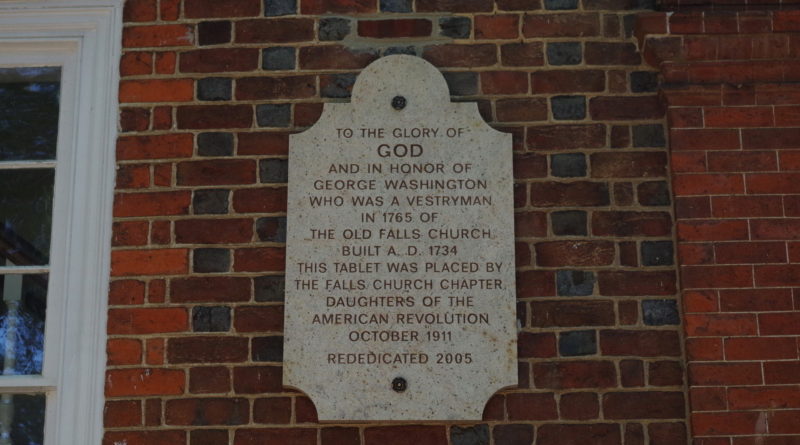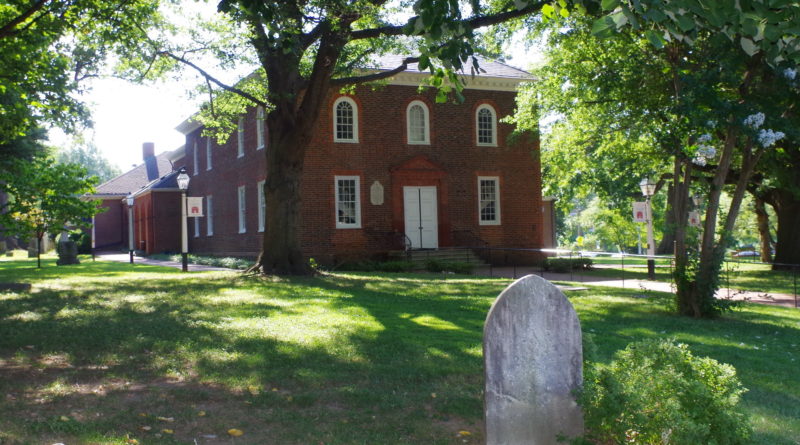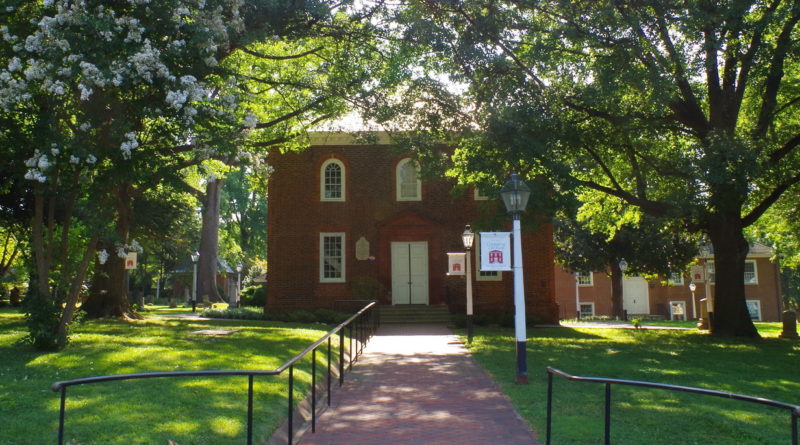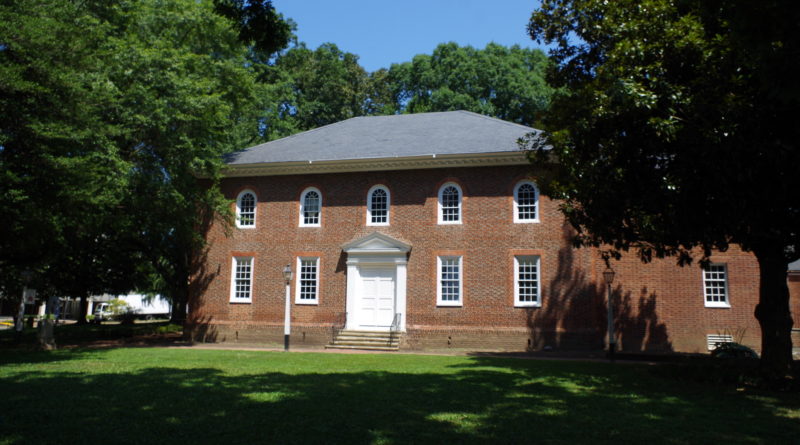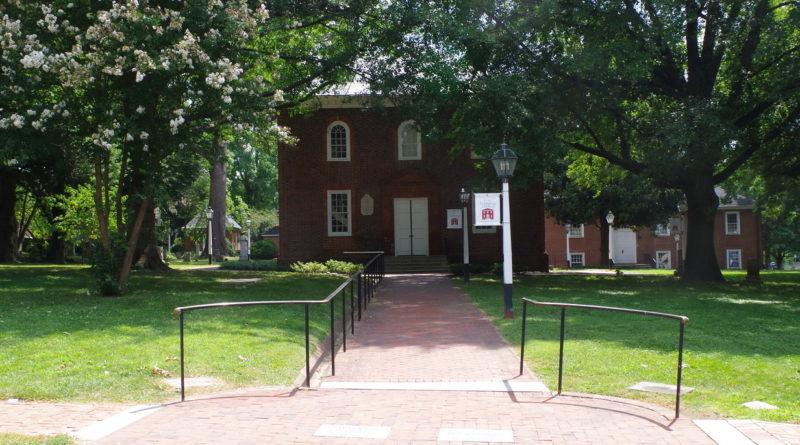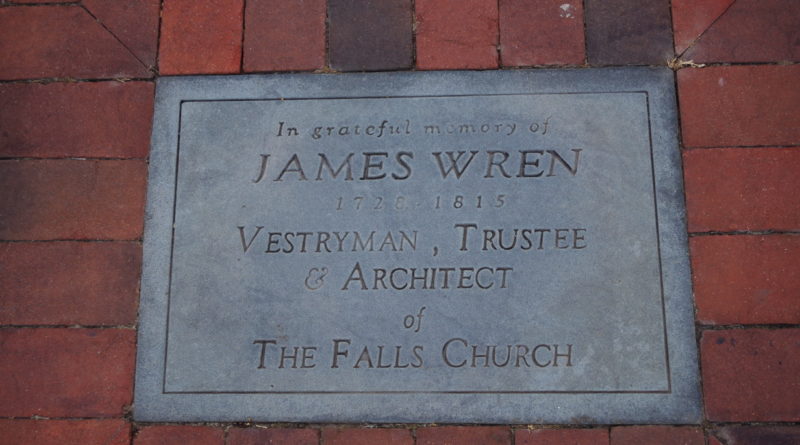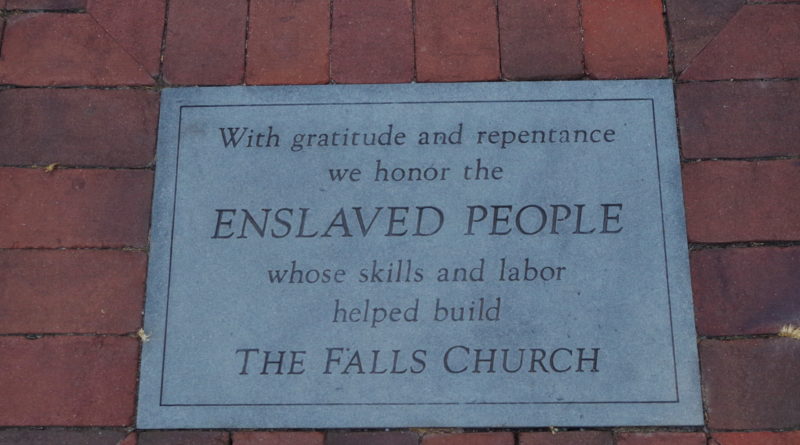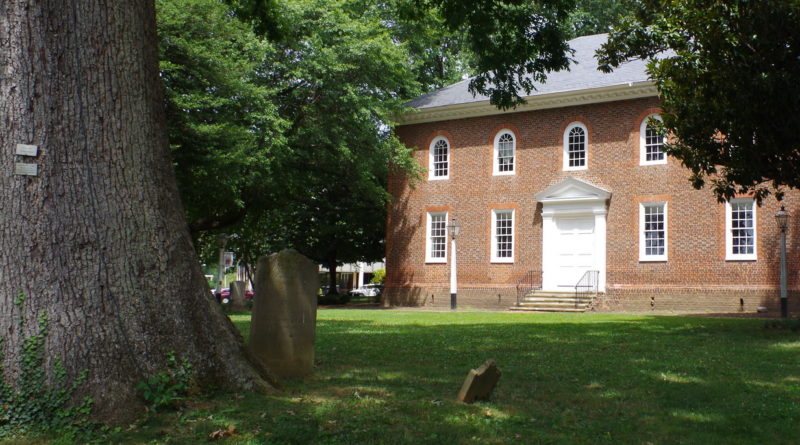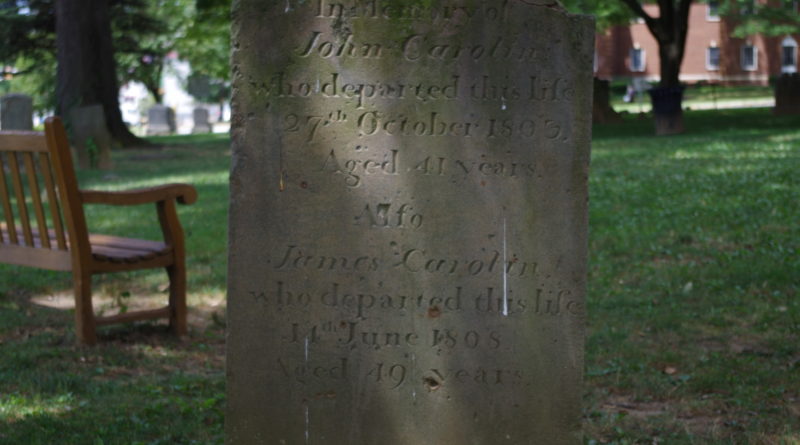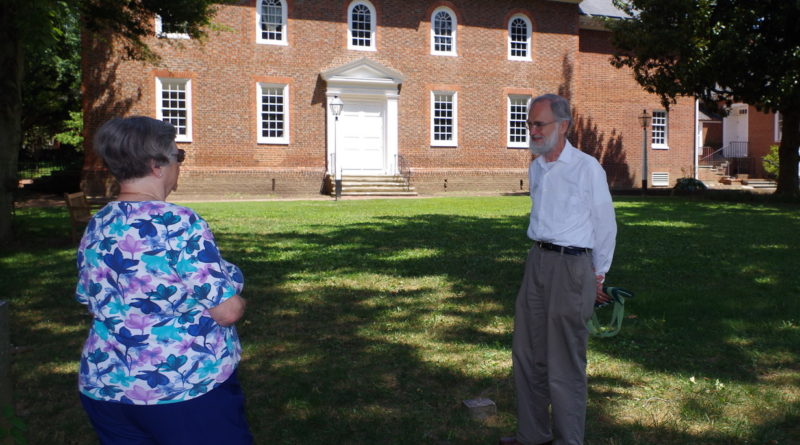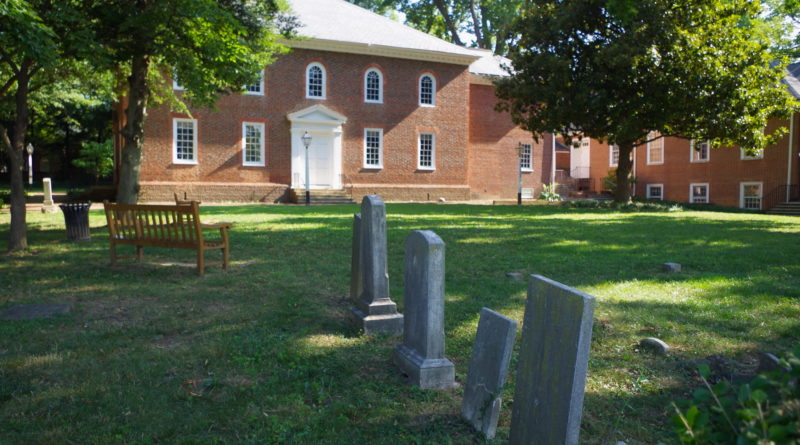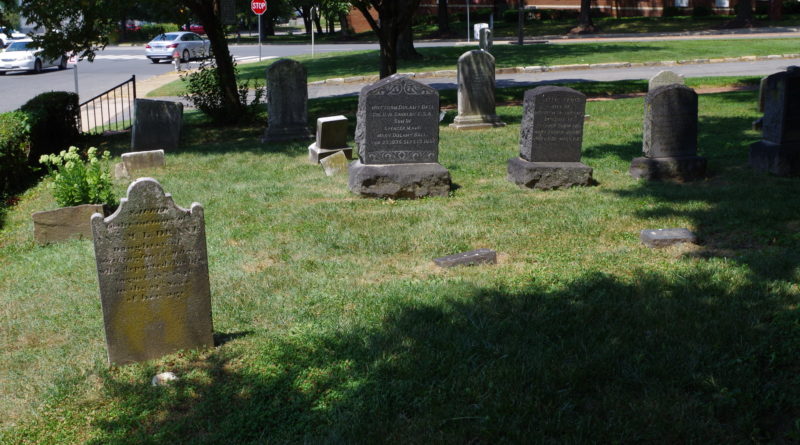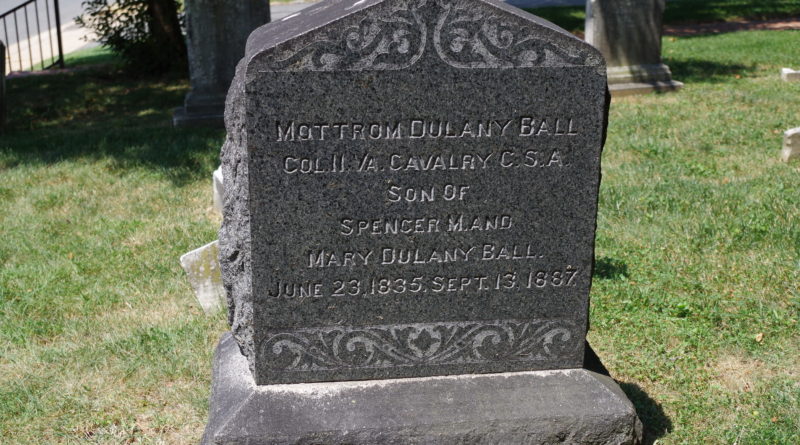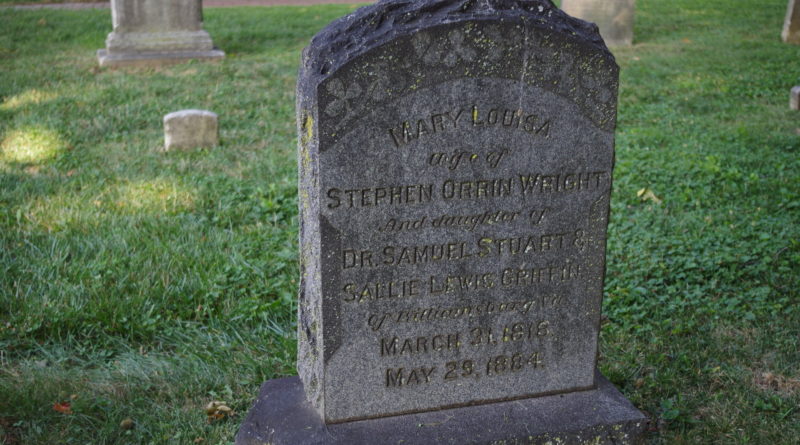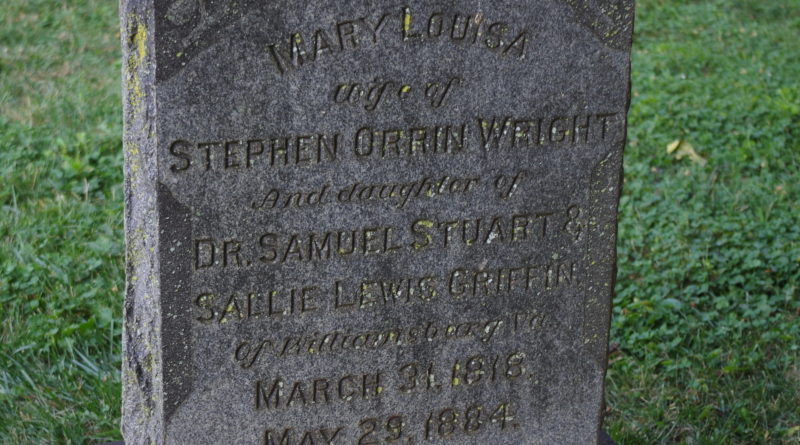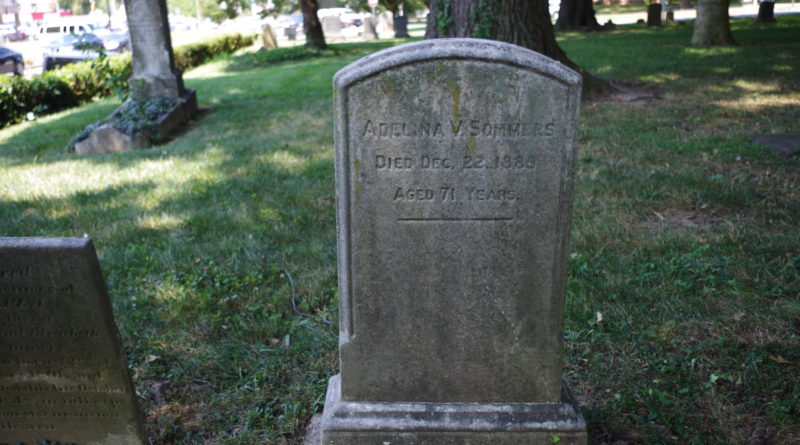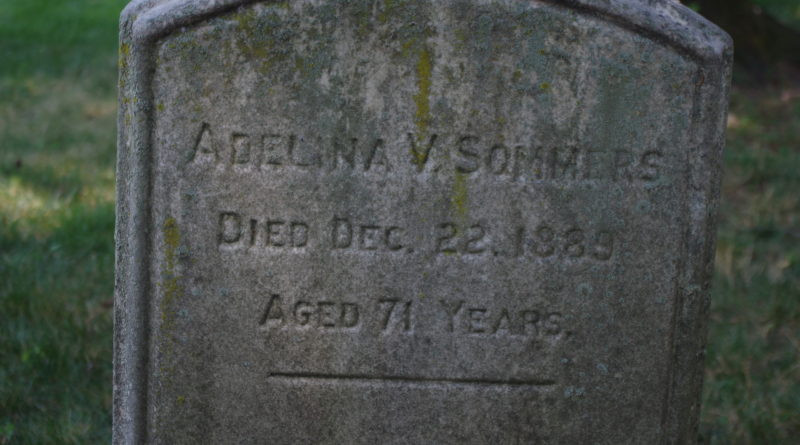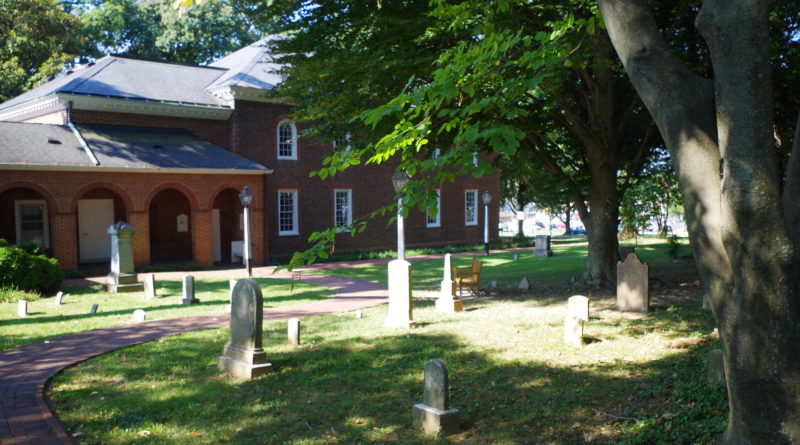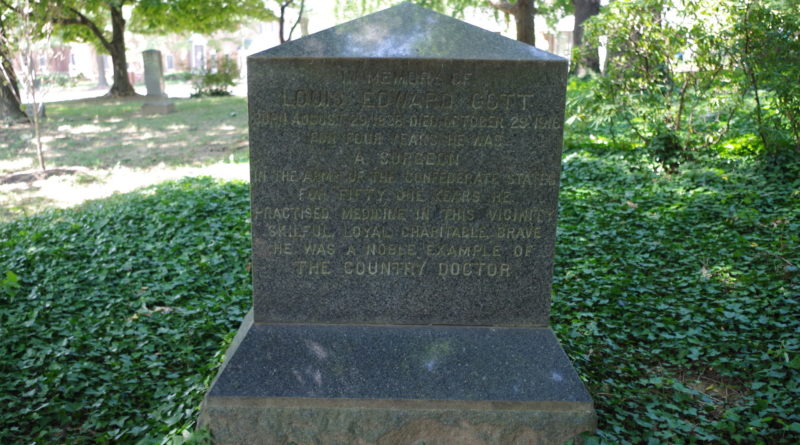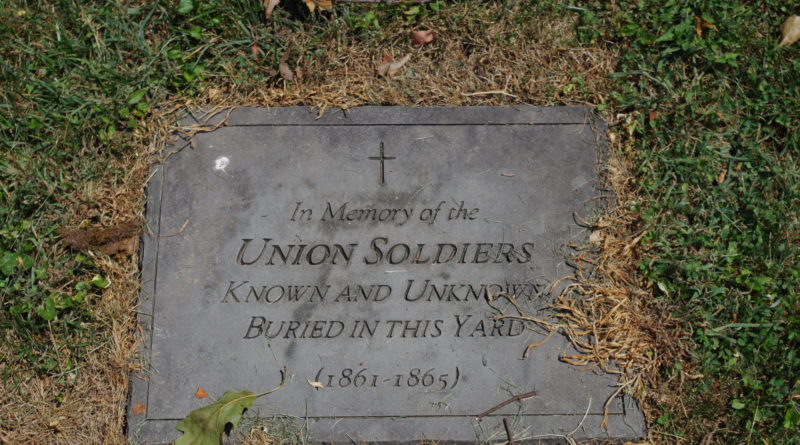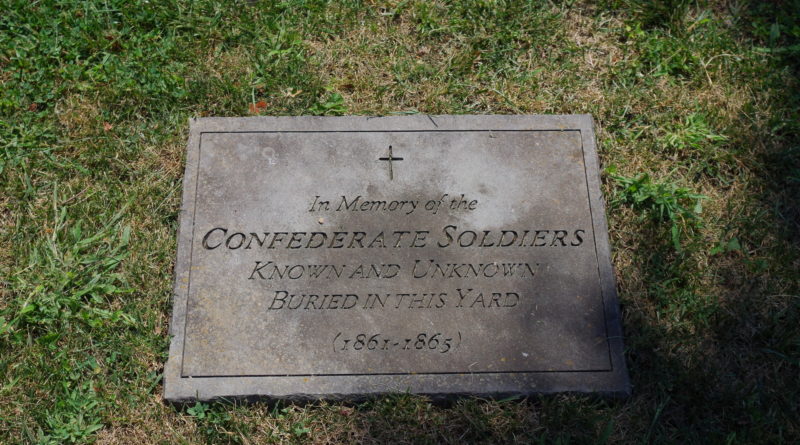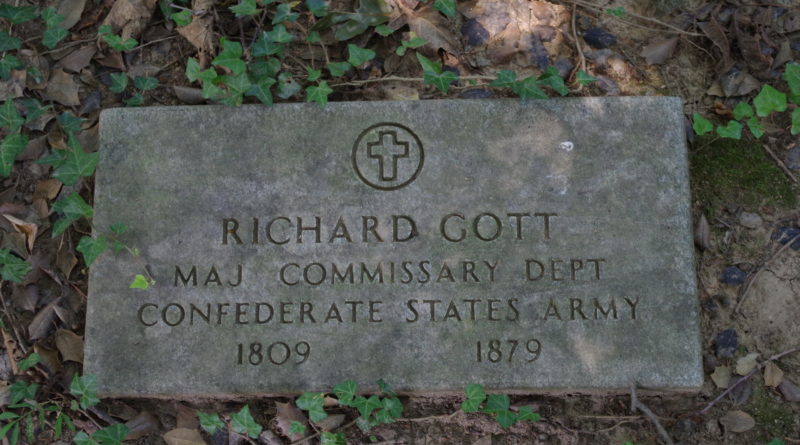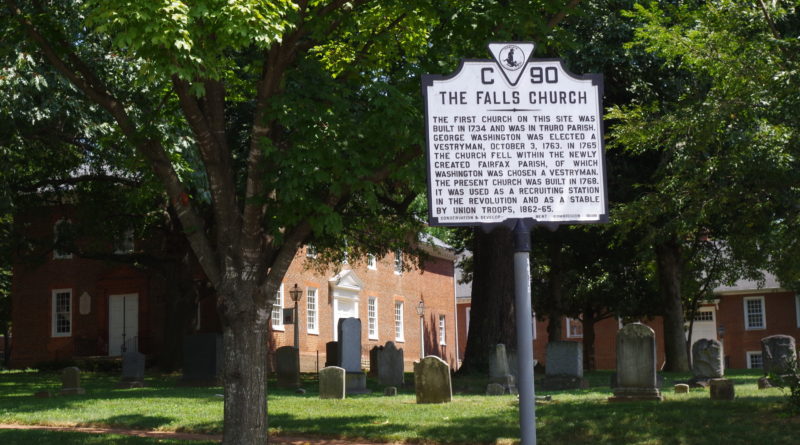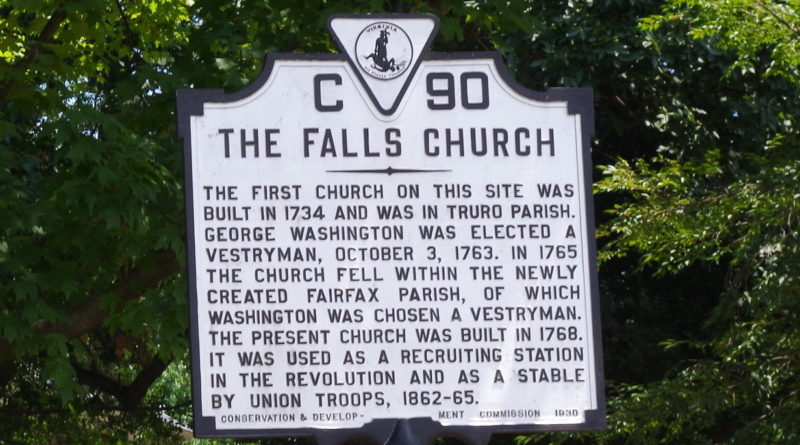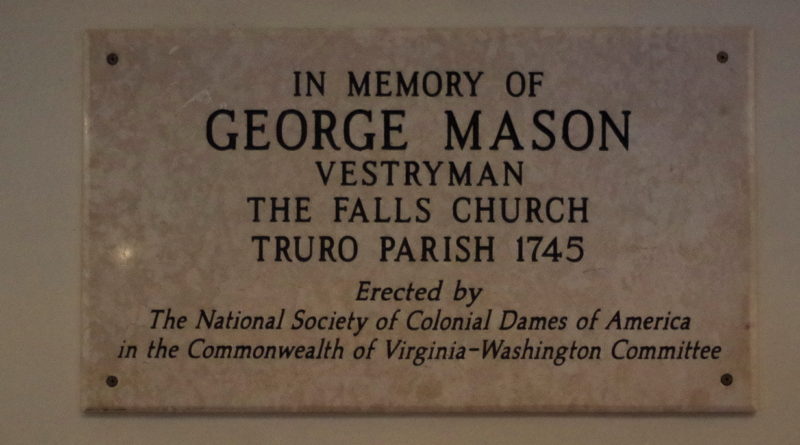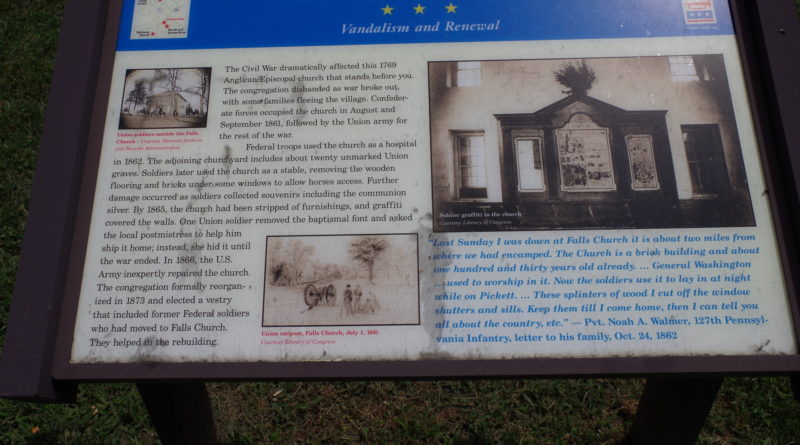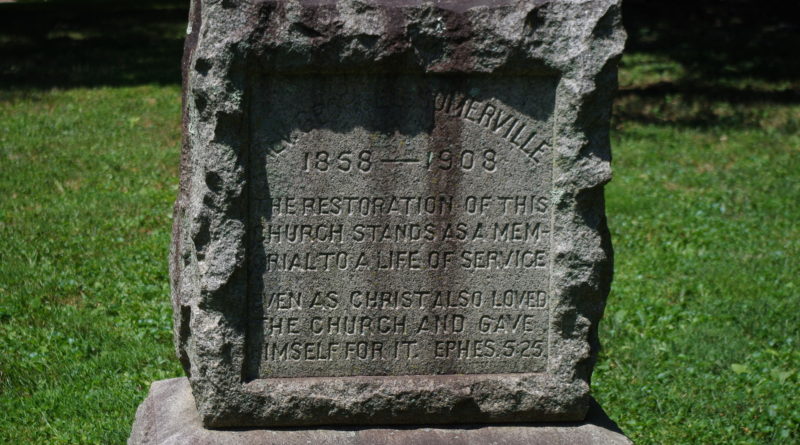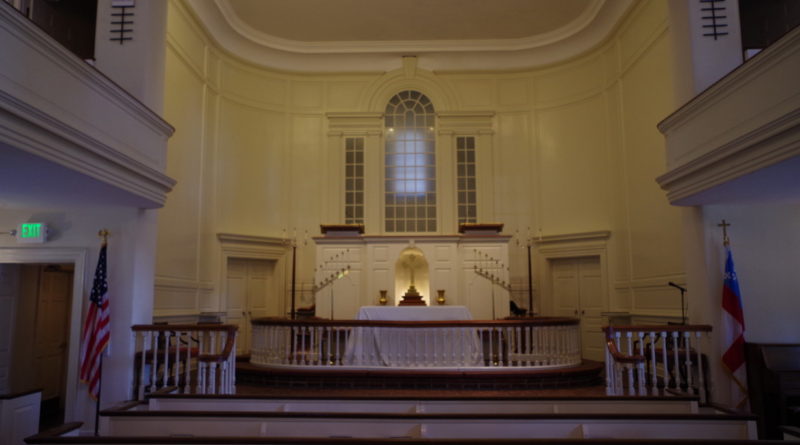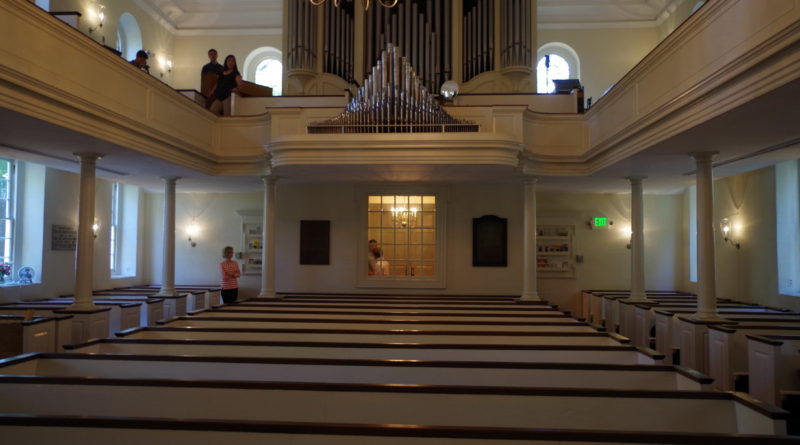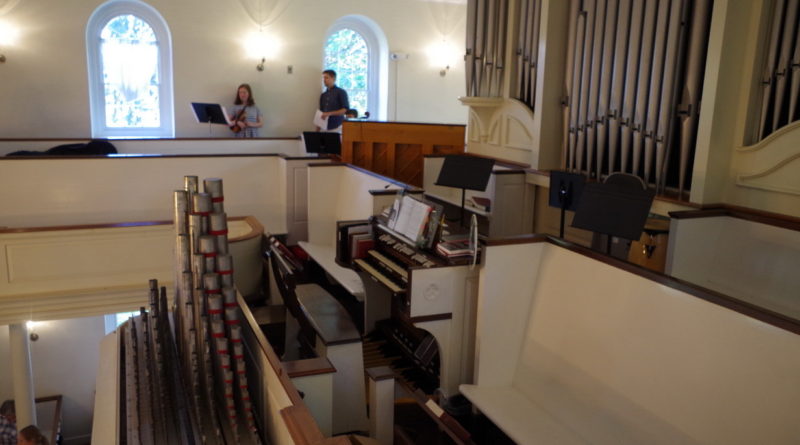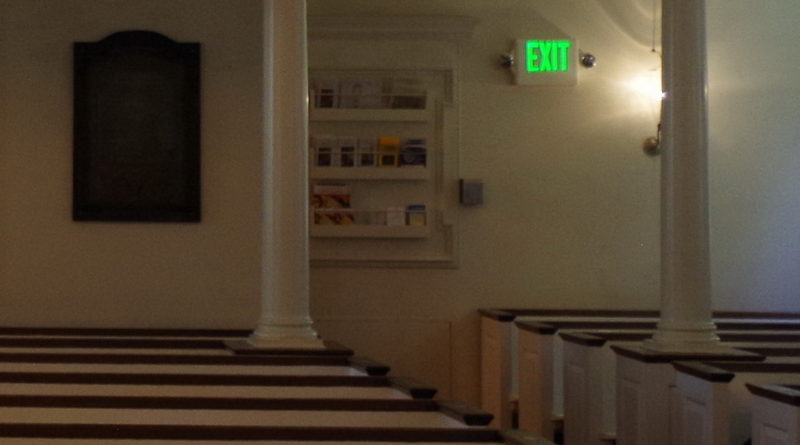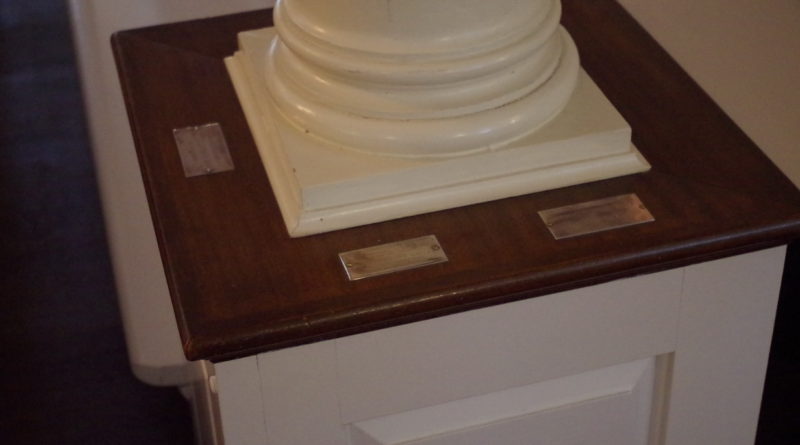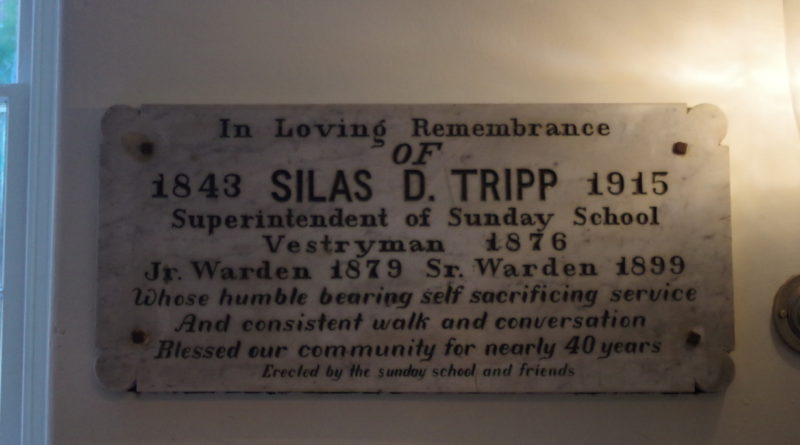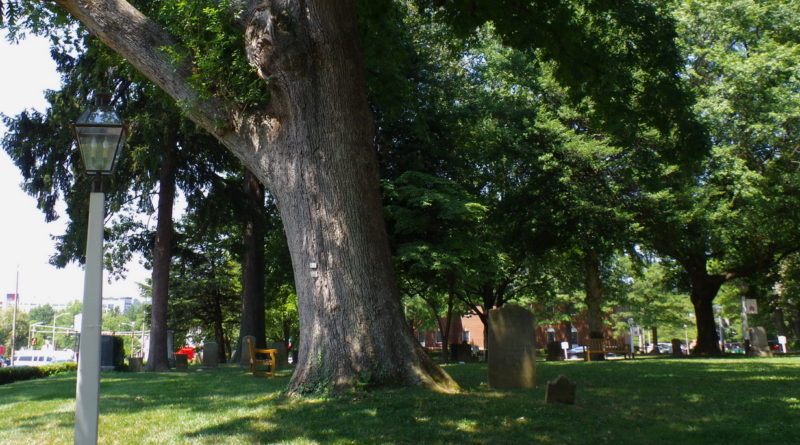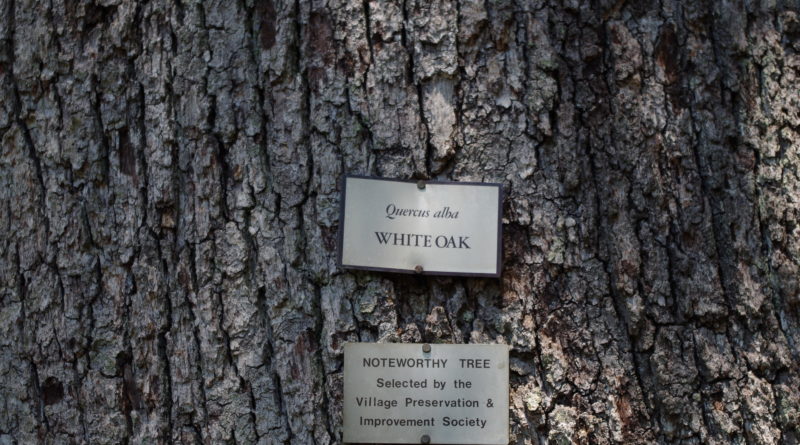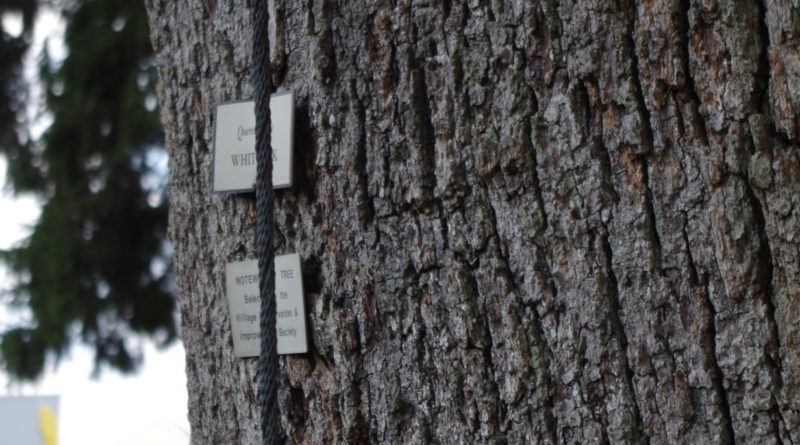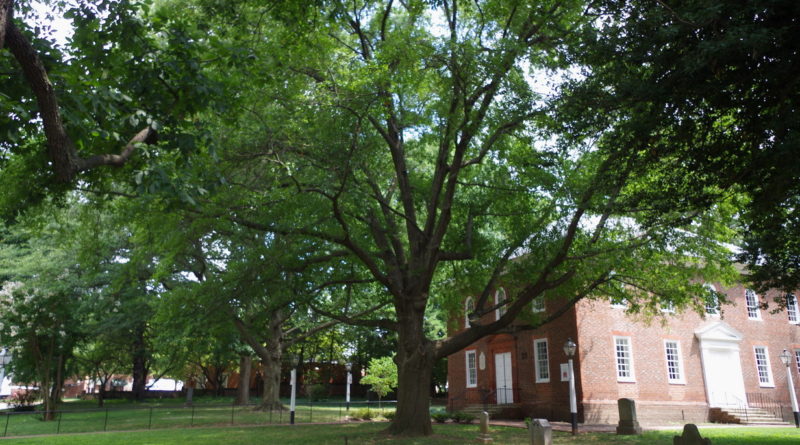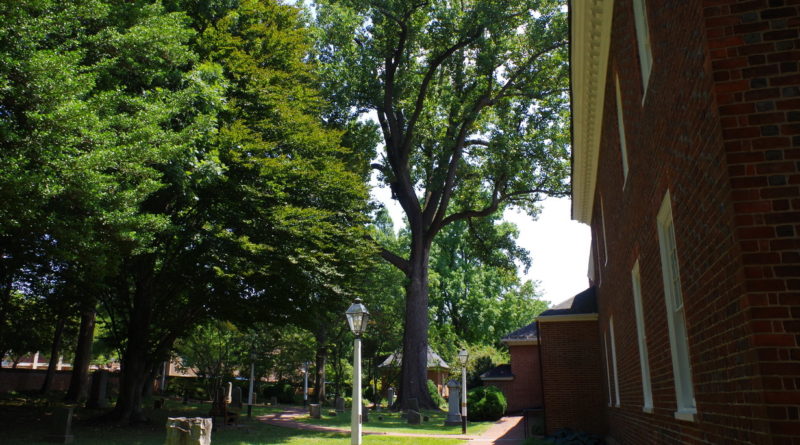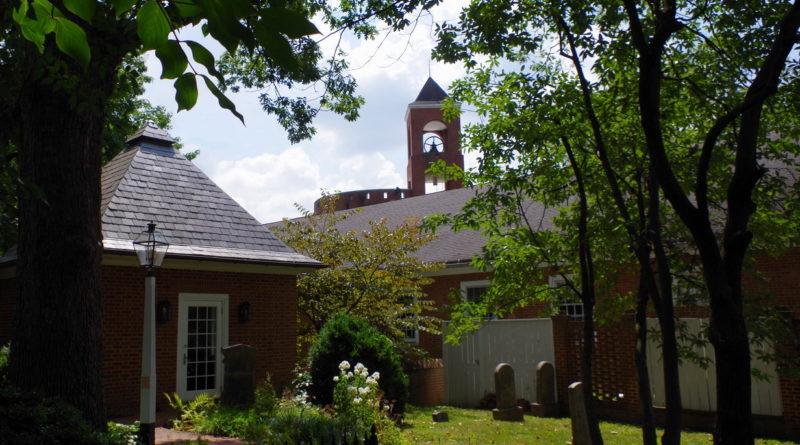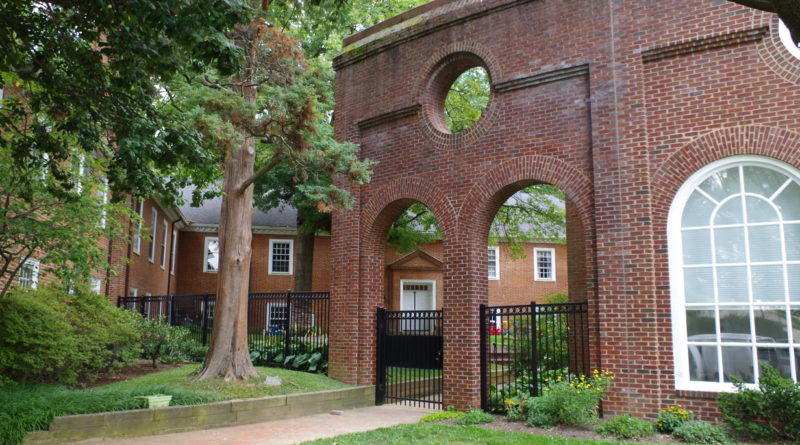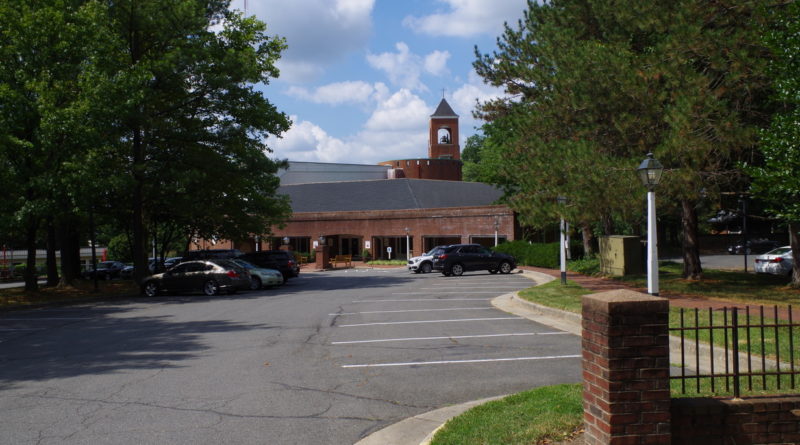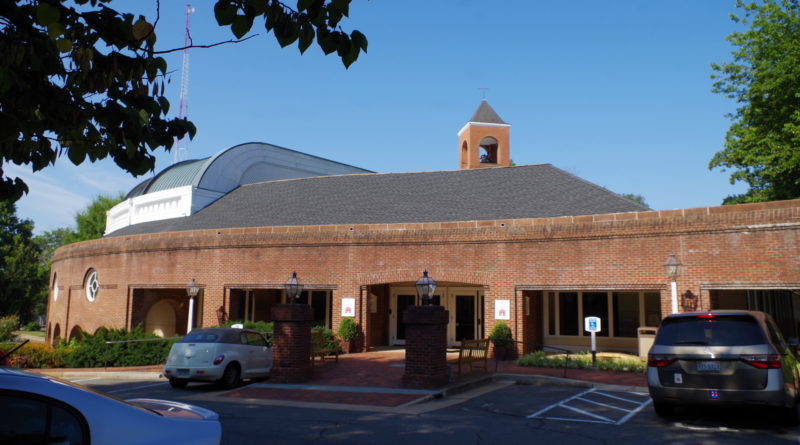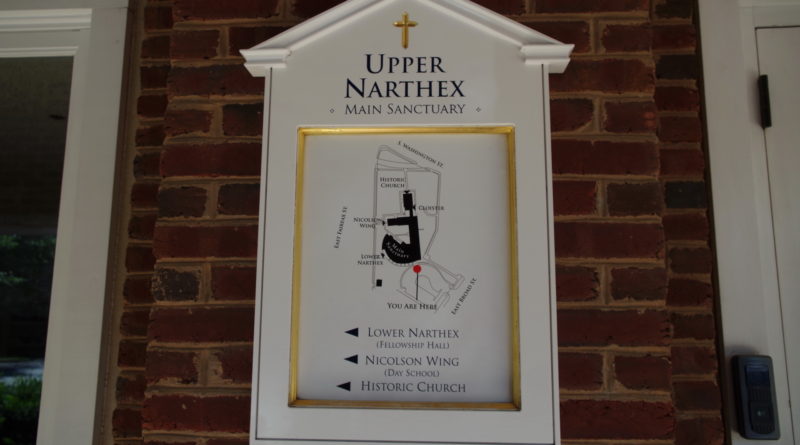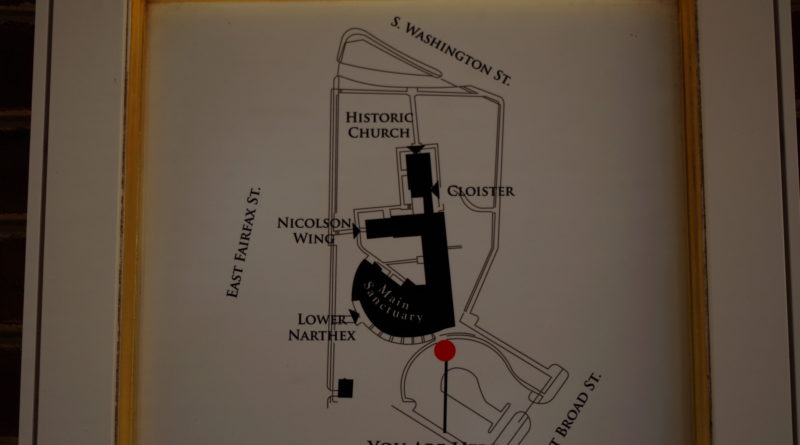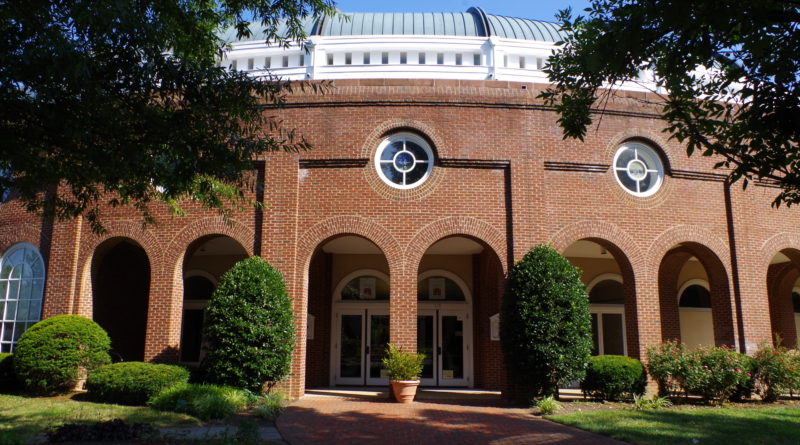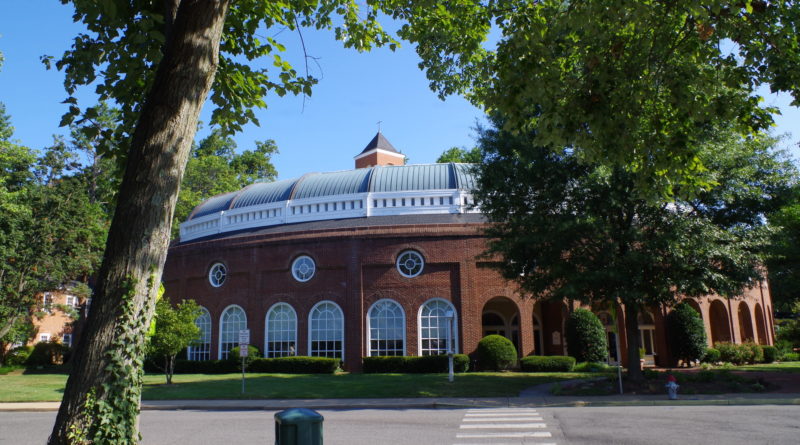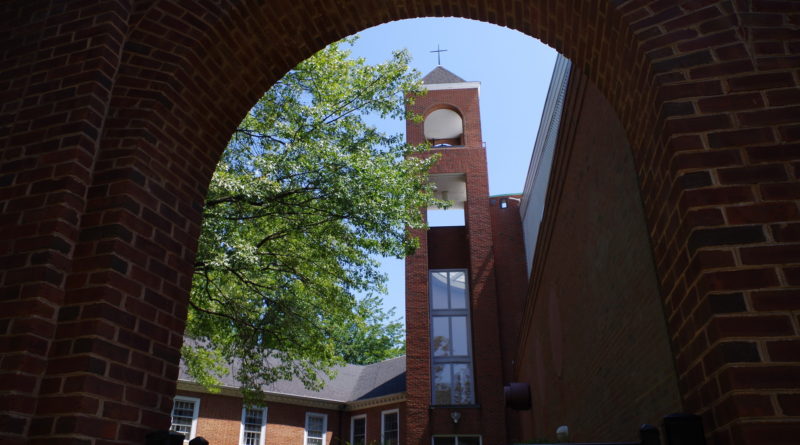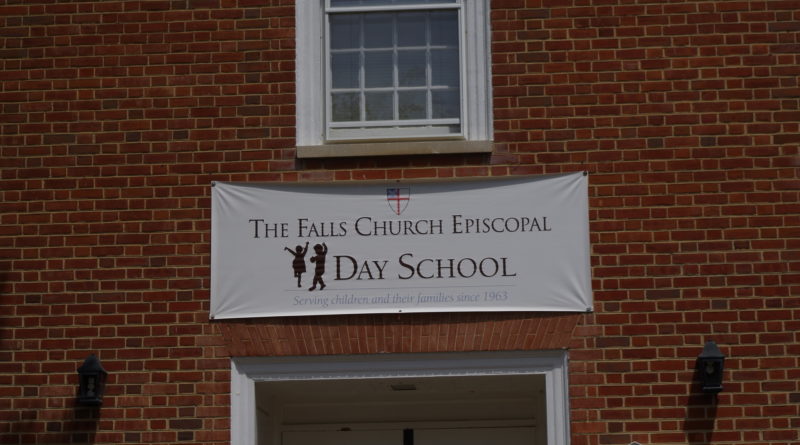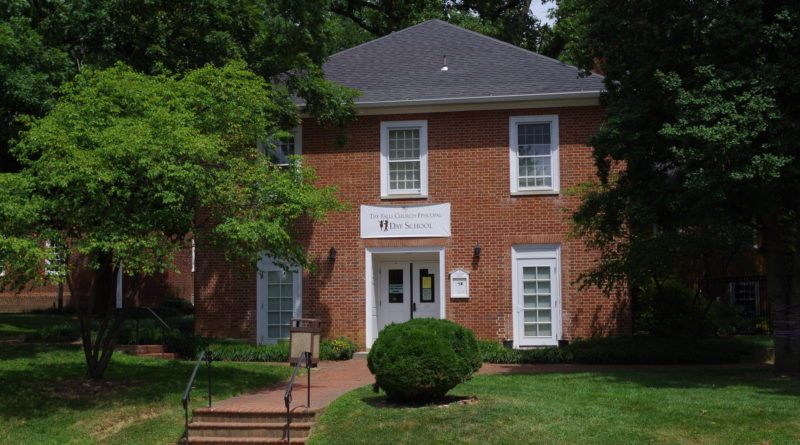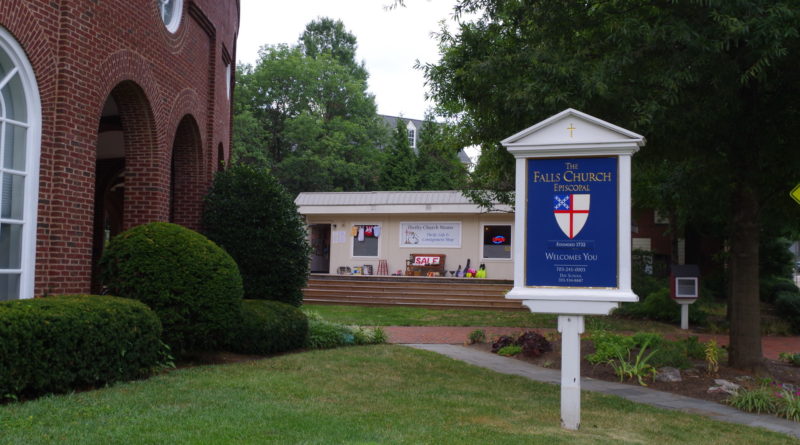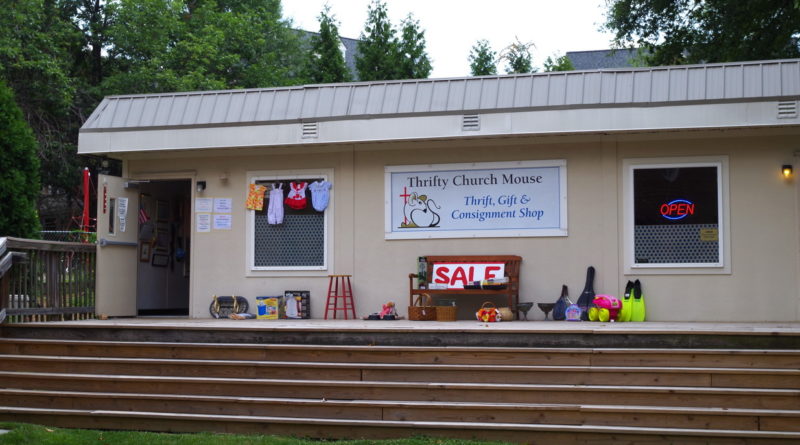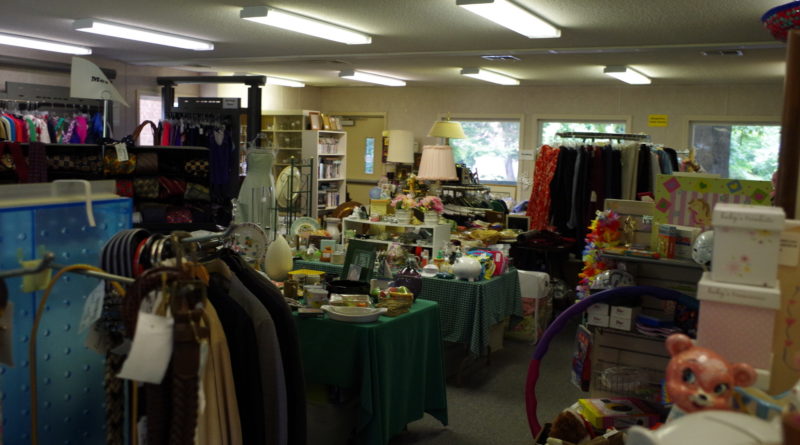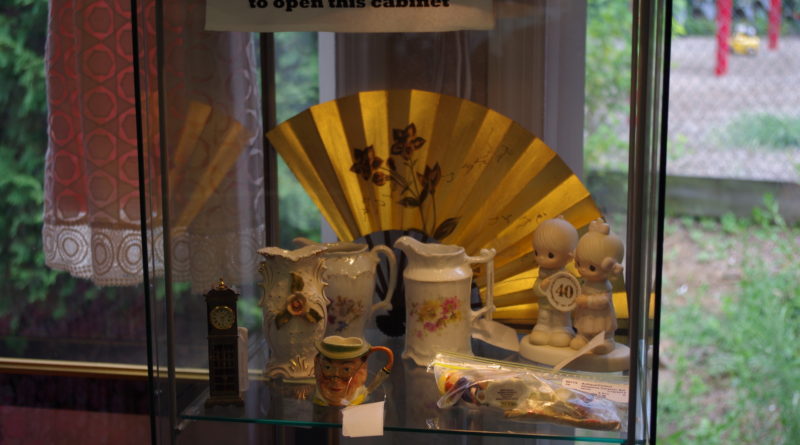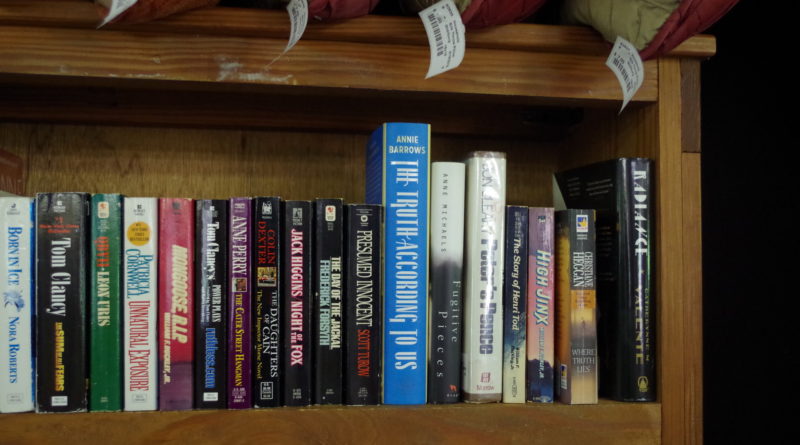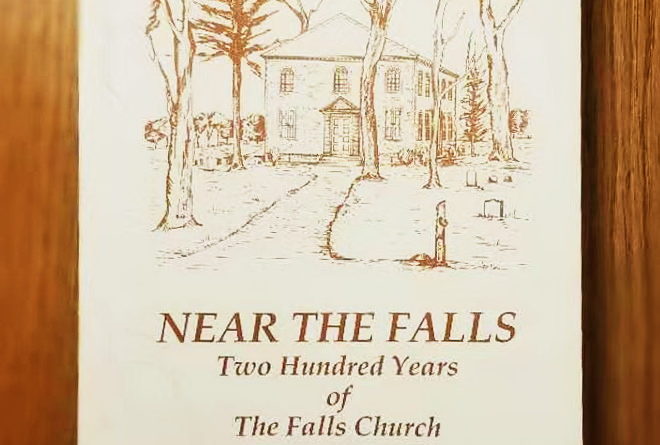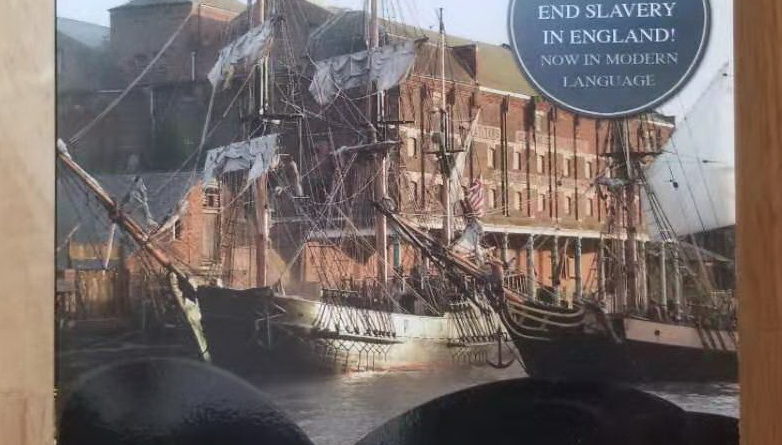Photos of The Falls Church from our visit of August 2019. See related blog article here.
The Falls Church is celebrating its 250th anniversary as we gather to celebrate the marriage of two young people who grew up and worshiped here weekly with their families. (A modern building, constructed in recent decades, is attached at the rear of the historic building. (See photos below.)
The historic building dates from 1769. The entrance faces west while the worshipers inside face east (towards Jerusalem, as has been a Christian custom).
Fascinating information exists about the architect and builder, James Wren, who was serving as a vestryman when he submitted plans in 1766 for constructing the present building. A history of Falls Church (1969) reports that James Wren is of direct family descent from Sir Christopher Wren (1632 – 1723), the famous British architect responsible for building St Paul’s Cathedral in London (1710) among a host of other famous buildings. Construction of this was building was completed within just 60 years of St. Paul’s.
A stone marker commemorating James Wren lies at the foot of the walkway to the main entrance. Next to it, in somewhat equal distinction today, is a marker honouring the slaves who helped construct the church.
Below are views of the church and grounds from the south side with grave markers in the foreground. The site was the one local community burial site until the early 1800s. We had the good fortune to meet the official historian of The Falls Church. He provided some interesting insight into the early times and details of what we were viewing. For instance, the oldest grave marker here records a burial of 1805 and is located under a great tree just to the south of the church. Images below start with this grave.
Some inscriptions are in memory of the many young men who died in the Civil War (1861-65), providing equal treatment here for both sides of the conflict.
Both George Washington, first president of the the newly-formed United States of America (1789), and George Mason, one of the key architects of the American Constitution, were vestrymen of this church before making their great contributions to the new American Republic. Another is celebrated for restoration of the building. A sign includes details of the near destruction of the church during the Civil War.
The interior of the church exists now much as it has been for the past 70 years with a balcony on three sides and a pipe organ also located at the upper level. This was the site of the wedding we were so pleased to celebrate.
Again, outside, the trees are large and majestic. Legend has it that George Washington would tie his horse to the largest of these old trees when attending church or vestry council meetings. The tree is protected today with a lightning rod and grounding cable.
In recent years a much newer and larger church building (with associated halls and classrooms) has been added, such that both buildings are commonly used each week for worship services. Photos here start on the north side and offer images of the new church complex in clockwise rotation.
The Thrifty Church Mouse is a separate building offering used clothes, books, and other items at minimal cost. We were delighted to find just one copy of a book published to celebrate the first 200 years of the church. Another find, was a reissuing of a book written by William Wilberforce, entitled Real Christianity. (Wilberforce was the famous British parliamentarian who struggled for 40 years to abolish slavery in the British Empire. A movie, named Amazing Grace, has been produced to tell his story and that also of the ship captain, John Newton, who became a Christian pastor and strongly influenced Wilberforce.) Our visit to the Church Mouse shop just before our return home to Canada simply added more to our understanding to the events that shaped so much of the early life of the USA.
First published: 2019/08/02
Latest revision: 2020/03/27
